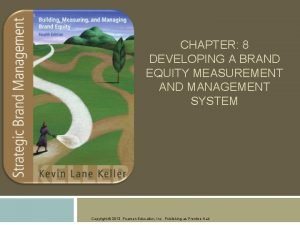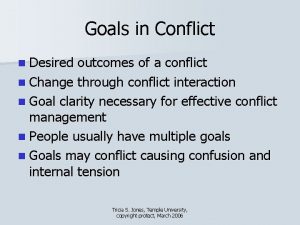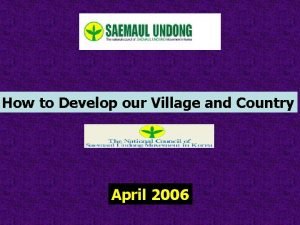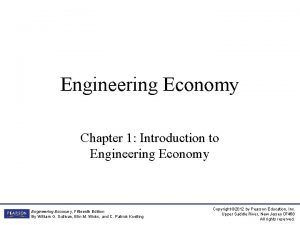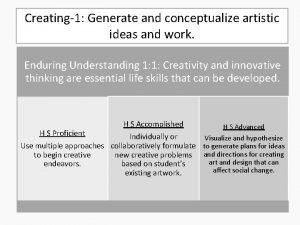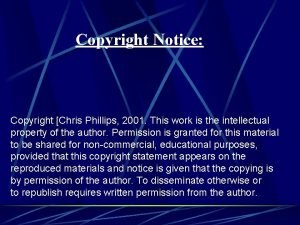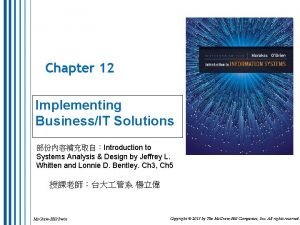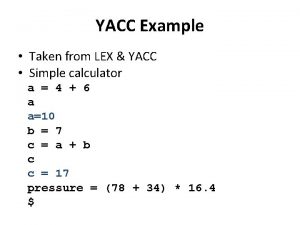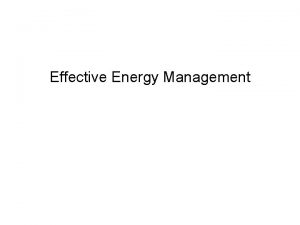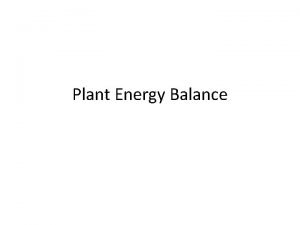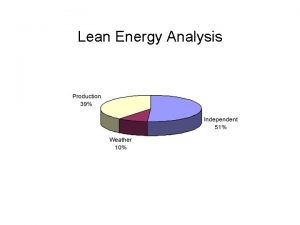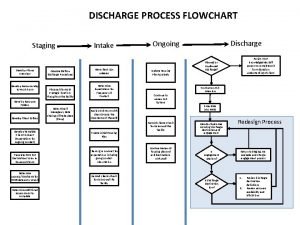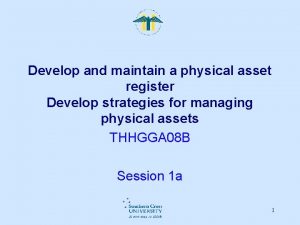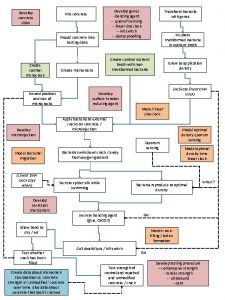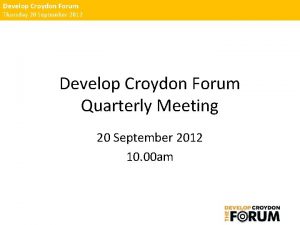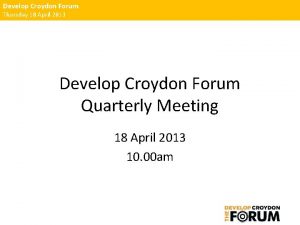Effective Energy Management Effective Energy Management 1 Develop








































- Slides: 40

Effective Energy Management

Effective Energy Management 1. Develop baseline 2. Identify and quantify savings opportunities 3. Measure and benchmark to sustain efforts

1. Energy Use Baseline – Billing analysis • How energy is priced – Plant energy balance • Where energy is used – Lean energy analysis (LEA) • What drives changes in energy use

Utility Bill Analysis § Analyze rate schedule § Verify billing amounts § Check for saving opportunities: – Primary/secondary – Power factor correction – Meter consolidation – Demand reduction potential

Plant Energy Balance 1) Estimate energy use from: • rated power • frac loaded • operating hours 2) Calibrate sum against measured total energy use

Energy Use Breakdowns by Equipment

Lean Energy Analysis § Understand what drives changes in Energy § Quantify “Waste” and “Lean” § Model: Energy = a + b Production + c Weather

Source Data

Actual Temperature Data http: //academic. udayton. edu/kissock

Plot Fuel vs Toa

Model Fuel Use vs Toa: 3 PH HS Find Tcp R 2 = 0. 92

Model Fuel Use vs Production: 2 P R 2 = 0. 02 Prod Slope Negative

Model Fuel Use vs Toa and Prod: 3 PH-MVR R 2 = 0. 97 Prod Slope = Positive

Disaggregate Fuel Use Fuel Weather = 28% Production = 58% Independent = 14% Temperature

Model Electricity vs Toa: 3 PC R 2 = 0. 67

Model Electricity vs Production: 2 P R 2 = 0. 32

Model Electricity vs Toa and Prod: 3 PC-MVR R 2 = 0. 82

Disaggregate Electricity Use Electricity Weather = 10% Production = 39% Independent = 51% Temperature

Lean Energy Analysis § Called “Lean Energy Analysis” because of synergy with “Lean Manufacturing”. § In lean manufacturing, “any activity that does not add value to the product is waste”. § Similarly, “any energy that does not add value to a product or the facility is also waste”.

Quantified “Leaness” of Fuel Use “Independent” is a metric of energy not added to product Fuel LEA = %Production + %Weather Fuel LEA = 86%

Quantified “Leaness” of Electricity Use “Independent” is a metric of energy not added to product Electricity LEA = %Production + %Weather = 49% Electricity LEA = 49%

Average LEA Scores (%P+%W) (28 Manufacturing Facilities) 58% 39%

Use Lean Energy Analysis To Discover Savings Opportunities LEA Indicators of Savings Opportunities – High “Independent” indicates waste – Departure from expected shape – High scatter indicates poor control

Low Electric LEA = 24% Indicates Operating Opportunities

Low Fuel LEA Identifies Insulation Opportunities

High Heating Slope Identifies Heating Efficiency / Insulation Opportunities

High Data Scatter Identifies Control Opportunities Heating Energy Varies by 3 X at Same Temp!

Departure From Expected Shape Identifies Malfunctioning Economizers § Air conditioning electricity use should flatten below 50 F § Audit found malfunctioning economizers

Lean Energy Analysis § Quick but accurate disaggregation of energy use: – Quantifies the energy not adding value to product or the facility – Helps identify savings opportunities – Provides an accurate baseline for measuring the effectiveness of energy management efforts over time.

2. Identify and Quantify Saving Opportunities § Identifying energy savings – Use “Integrated Systems + Principles Approach (ISPA) – ISPA is effective and thorough § Quantifying energy savings – Requires competent engineering – May warrant energy audit – May consider energy savings performance contract (ESPC)

Prioritize Saving Opportunities § Multiple filters – Financial return on investment • Rank versus other energy saving opportunities • Rank versus other requests for capital • Risk – Consistent with other priorities – Available and knowledgeable staff to manage project

Implement Savings Opportunities § Management commitment § Operator and maintenance education and buy in

3. Measurement and Benchmarking § Sustaining energy efficiency efforts requires that effectiveness of past efforts be accurately evaluated. – Verify the performance of past energy-efficiency efforts – Inform the selection of future energy-efficiency initiatives – Help develop energy-efficiency targets § Measurement – Extend LEA with sliding NAC and EI to measure energy efficiency improvement § Benchmarking – Compare NAC and EI for inter-facility

Normalized Energy Intensity 1) Characterize performance with ‘Energy signature’ model 2) Remove noise with ‘Normalized annual consumption’ NAC 3) Track performance with ‘Sliding NAC’ analysis 4) Benchmark performance with ‘Multi-site sliding NAC’ analysis

Raw Energy and Production Data

Normalized Energy Intensity

Benchmark NEI vs. Multiple Facilities DNEI

Case Study: Turn off Make-up Air Units During Non-Production Hours Heating Slope Decreases by 50% Baseline retrofit Post-

Sliding NEI Fuel NEI decreased by 23% Independent of weather/production changes

Summary: Effective Energy Management § Develop baseline – Plant energy balance – Lean energy analysis (LEA) § Take action – Identify and quantify energy saving opportunities – Prioritize energy saving opportunities – Implement energy saving opportunities § Measure and benchmark to sustain efforts – Develop metrics for system energy efficiency – Measure energy efficiency improvement with sliding NAC and EI – Compare energy efficiency between facilities with NAC and EI
 Develop schedule in project management
Develop schedule in project management Efficient master data management strategy
Efficient master data management strategy What is brand equity management system
What is brand equity management system Developing a brand equity measurement and management system
Developing a brand equity measurement and management system Energy energy transfer and general energy analysis
Energy energy transfer and general energy analysis Energy energy transfer and general energy analysis
Energy energy transfer and general energy analysis Why did a stale- mate develop on the western front?
Why did a stale- mate develop on the western front? Why did a stale- mate develop on the western front?
Why did a stale- mate develop on the western front? Competency based job description sample
Competency based job description sample Massive igneous rock from which tors develop
Massive igneous rock from which tors develop Intrapersonal and interpersonal difference
Intrapersonal and interpersonal difference Social factors
Social factors Alarm clock use case diagram
Alarm clock use case diagram Develop discrepancy example
Develop discrepancy example Develop discrepancy example
Develop discrepancy example Hamlet's dull revenge pdf
Hamlet's dull revenge pdf Father of philippine guidance
Father of philippine guidance Prospective goals
Prospective goals Food and beverage knowledge
Food and beverage knowledge Reflected appraisal
Reflected appraisal Attempts to develop quantitative measures of lifestyle
Attempts to develop quantitative measures of lifestyle Approaches to develop physical factors
Approaches to develop physical factors Disadvantages of mental rehearsal in sport
Disadvantages of mental rehearsal in sport Approaches to develop emotional factors
Approaches to develop emotional factors Approaches to develop emotional factors
Approaches to develop emotional factors Inputs to develop project charter
Inputs to develop project charter Perceptive listening definition
Perceptive listening definition Why do we use coaching to develop marines
Why do we use coaching to develop marines Master develop feature
Master develop feature How to develop my village
How to develop my village Develop the alternatives engineering economy
Develop the alternatives engineering economy Tizen development kit
Tizen development kit Generate and conceptualize artistic ideas and work
Generate and conceptualize artistic ideas and work Chris phillips just develop it
Chris phillips just develop it Hinduism and buddhism develop
Hinduism and buddhism develop Develop vs implement
Develop vs implement Lex yacc example
Lex yacc example The renaissance in northern europe
The renaissance in northern europe What are contrived experiences
What are contrived experiences Develop new approaches to public governance and engagement
Develop new approaches to public governance and engagement Contents of crm strategy
Contents of crm strategy



